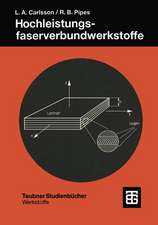From Research to Manuscript: A Guide to Scientific Writing
Autor Michael Jay Katzen Limba Engleză Paperback – 28 ian 2009
Preț: 594.49 lei
Preț vechi: 699.39 lei
-15% Nou
Puncte Express: 892
Preț estimativ în valută:
113.75€ • 119.09$ • 94.13£
113.75€ • 119.09$ • 94.13£
Carte tipărită la comandă
Livrare economică 05-19 aprilie
Preluare comenzi: 021 569.72.76
Specificații
ISBN-13: 9781402094668
ISBN-10: 1402094663
Pagini: 210
Ilustrații: XIV, 210 p.
Dimensiuni: 155 x 235 x 12 mm
Greutate: 0.71 kg
Ediția:2nd ed. 2009
Editura: SPRINGER NETHERLANDS
Colecția Springer
Locul publicării:Dordrecht, Netherlands
ISBN-10: 1402094663
Pagini: 210
Ilustrații: XIV, 210 p.
Dimensiuni: 155 x 235 x 12 mm
Greutate: 0.71 kg
Ediția:2nd ed. 2009
Editura: SPRINGER NETHERLANDS
Colecția Springer
Locul publicării:Dordrecht, Netherlands
Public țintă
ResearchCuprins
Acknowledgements. Introduction. Scientific Papers Used as Examples; Part I: Tools and Techniques. 1 The Standards of a Scientific Paper. A- A Stereotyped Format. B- Precise Language. C- A Single, Clear Direction. D- Reviewed and Made Available to Others. 2 Scientific Words, Sentences, and Paragraphs. A-Scientific Text Needs Exactness and Clarity. B- The Paragraph is the Unit of Exposition. 3 Writing Scientific Text. A- Begin to Write While You Experiment. B- Start Broadly, Work on the Details Later. C- A Magnified View of the Writing Process. D- Advice to Speakers of Other Languages. 4 Presenting Numerical Data. A- Tables. B- Statistics. 5 Constructing Scientific Figures. A- Basic Guidelines. B- Figure Legends. C- Numerical Figures. D- Preparation for Submission to a Journal. E- Scientific Patterns should be Reproducible; Part II: Writing a Research Paper. 1 Writing During Research. A. Keep a Computerized Notebook B. Begin a Draft Early Chapter 2 Composing the Sections of a Research Paper; A. Materials and Methods; B. Appendix; C. Results; D. Discussion; E. Conclusion; F. Limitations of this Study; G. Introduction; H. Abstract; I. Key Words and List of Nonstandard Abbreviations; J. Title; K. Footnotes; L. Acknowledgements; M. References; Part III: Preparing a Manuscript for Submission; Chapter 1. Choosing a Journal, A. Make a List of Candidate Journals, B. Style Rules; Chapter 2 A Final Rewrite, A. Get a Friendly Critique , B. Read the Paper Backwards, C. Recheck the Spelling; Chapter 3 Preparing and Submitting the Manuscript, A. Print and Page Format, B. The Manuscript Packet, C. The Introductory Letter; Chapter 4 Responding to Editors and Referees; Appendix A Words That Are Often Misused; Appendix B Simplifying Wordy, Redundant, And Awkward Phrases; Appendix C Standard Scientific Abbreviations, Appendix D Typical Bibliographic Formats, Appendix E Additional Reading, Appendix F Software Suggestions; Index.
Textul de pe ultima copertă
Written in simple, straightforward language, From Research to Manuscript, explains how to understand and summarize a research project. It is a writing guide that goes beyond grammar and style by demonstrating how to pull together the information needed for each section of a polished scientific paper. This book is a systematic guide, leading you from the data on your desk through the drafts and rewrites that are needed to build a complete and tightly-written science article.
From Research to Manuscript:
Overall, From Research to Manuscript argues that scientists should be working on their paper during their active research. Writing will keep the research project organized, thorough, and thoughtful. From Research to Manuscript provides a format for integrating writing and research, so that you can strengthen your science, compose a better paper, and get the paper published.
"Compulsory reading for post-docs wanting to achieve success in the scientific field."
(Ronan Bree, National University of Ireland, Galway)
"A great addition to the personal libraries of graduate students and postdoctoral fellows bent on careers in science. Many seasoned scientists could also be advised to read the book to improve their skillsin writing."
(Donald K. Ingram, Editor-in-Chief of AGE)
From Research to Manuscript:
- includes tools and techniques for structuring the sentences, paragraphs, and sections of a research paper.
- gives wide-ranging examples from well-written research articles.
- offers advice to speakers of other languages.
- explains the effective use of tables, graphs, statistics, and figures.
- shows you how to organize your data to clearly present your results.
- guides you through the process of manuscript submission and editorial review.
Overall, From Research to Manuscript argues that scientists should be working on their paper during their active research. Writing will keep the research project organized, thorough, and thoughtful. From Research to Manuscript provides a format for integrating writing and research, so that you can strengthen your science, compose a better paper, and get the paper published.
"Compulsory reading for post-docs wanting to achieve success in the scientific field."
(Ronan Bree, National University of Ireland, Galway)
"A great addition to the personal libraries of graduate students and postdoctoral fellows bent on careers in science. Many seasoned scientists could also be advised to read the book to improve their skillsin writing."
(Donald K. Ingram, Editor-in-Chief of AGE)
Caracteristici
Clearly written, comprehensive instruction manual for turning research into a paper Contains specific examples from well-written research papers in a wide variety of fields Goes beyond formatting rules by explaining how to translate data into succinct, meaningful figures and text Offers advice to speakers of other languages Explains the effective use of tables, graphs, statistics, and figures Demonstrates the step-by-step construction of the Introduction and Discussion sections of research papers Includes practical advice on preparing a manuscript for submission and then responding to reviewers’ comments Includes tools and techniques for structuring the sentences, paragraphs, and sections of a research paper








